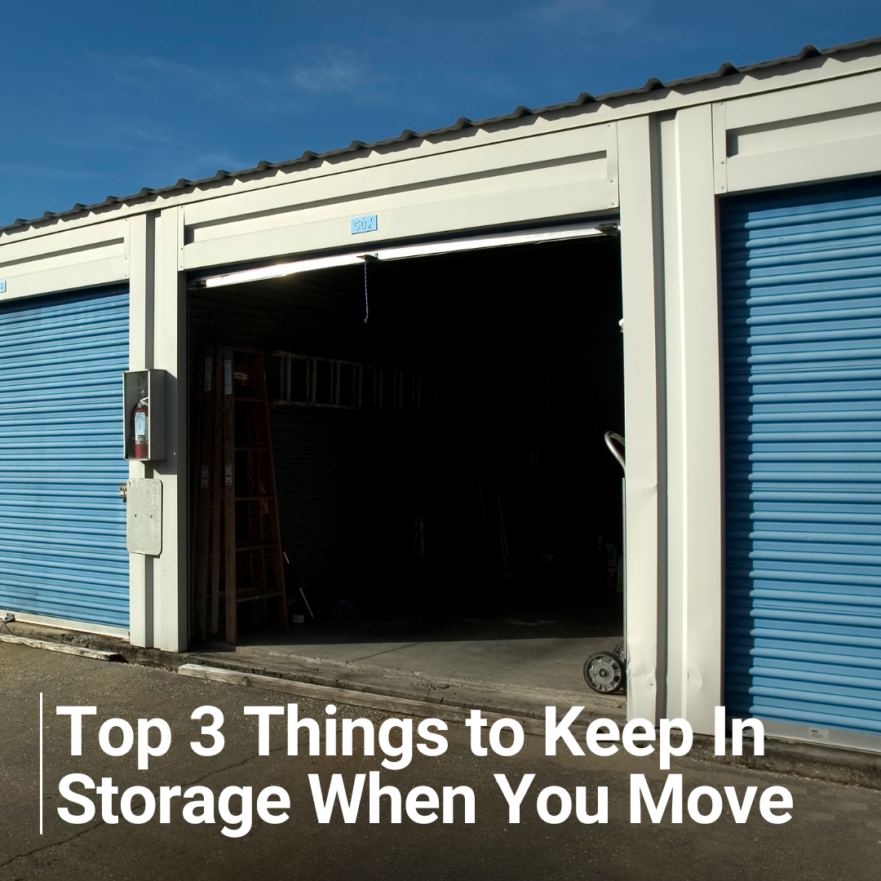When you are moving into a new home, your current household items may not fit. Organizing and arranging your belongings once they get to your new residence may be overwhelming if you have too much stuff and not enough space. We are here to guide you through this process and share some advice based on our more than thirty years of helping people get to life’s next address. If you are downsizing or are not sure if all your items will fit into your new home, temporary storage may be a solution to help free up some space.
When thinking about storage options, we recommend that you take into consideration what items are going to be necessities at your new home and what you can set aside. Make a list of the items you would like to be moved into your home, and a list of items that you want to hold onto but might need to put in storage. If you are unsure about what you would like to take to your new home and what to store, here are some ideas based on what we see our customers putting into temporary or long-term storage.
Seasonal Items
Holiday and seasonal items are the number one item for storage. Holiday decorations, sports clothing, outdoor items, or equipment can be stored temporarily while the remainder of your home is being moved and picked up when the right time of year is here.
- Holiday Decorations
- Seasonal Clothing
- Outdoor Camping Equipment
- Skiing and Snowboarding equipment
Extra Furniture
Collapsed beds, unused furniture, as well as outdoor pieces can all be stored temporarily since they are not necessities to move into your new home. Determining the specific pieces that are needed to move determines if there is enough room for extra furniture.
- Extra Collapsed Bed Frames
- Extra Unused Basement Furniture
- Outdoor Furniture
- Extra appliances
- Furniture that is too big to fit
Keepsakes and Mementos
Items that hold significant value and are irreplaceable should be considered for storage. The best storage locations have 24-hour video surveillance as well as locked doors with key code access. Depending on the size of your keepsakes, these items can be hard to store in a new home with very little space.
- Special Paintings
- Baby toys and bikes
- Collectables
- Sports Memorabilia
- Heirloom furniture
Climate Control
If you are just storing holiday decorations, a standard self-storage unit would be fine without heat or air conditioning, but if you are storing artwork and heirloom furniture, the climate control requirements are very different. Furniture does not do well with high-heat and low-temperature extremes. It can cause glued joints to dry up and crack and can harm the fine finish on furniture. Collectibles and sports memorabilia are also items that will need better temperature control to maintain their quality. Many self-storage facilities offer climate-controlled space just for this reason. Mover’s storage facilities are typically climate-controlled and are a great place to keep furniture and artwork in long-term storage. Ask us about the costs for long-term storage so you can compare them with DIY storage facilities.
Why Storage
Self-storage units or mover’s warehouses provide the elasticity we need to make everything fit during a move. If your next move is to a bigger space, you’re in the clear and will be able to take everything to your new home. If your move is to a smaller space, short- or long-term storage might be just what you need to make your move plan work. Self-storage gives you easy access to your goods, so if you’ll need to get things in and out of storage, a local storage facility will be a great help during your move. If you have some heirloom furniture items or valuable artwork that you will not need to get to frequently, a mover’s warehouse is the best place to keep these items until you have room to use them. At a self-storage facility, the person renting the unit next to yours could be storing who-knows-what in their unit, potentially causing a pest problem or even worse, a fire hazard. Movers only store household goods and inspect every item moving into their warehouse to make sure the shipment does not contain foods or flammables.
We’re happy to help you explore your options and can give you some guidance on how large a storage unit you might need based on your list of items. Just ask, and we’ll give you our best guidance on how to store your excess belongings.





